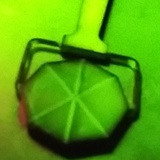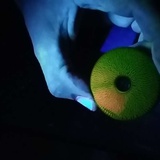Magnetic particle inspection (MT, MPI) allows to detect surface defects in ferromagnetic materials. This is the most commonly used method for steel constructions. Magnetic particle testing does not require as precise surface preparation as for dye penetrant testing They are used in various industries such as in construction, shipyards, railways, automotive and aviation.
Magnetic particle testing can be carried out in white light and UV light (UV testing can achieve higher testing sensitivity).

Application
A typical application of this method is testing of welded joints, forgings (e.g. connecting rods, propeller shafts, intermediate shafts, rudder blades) and castings (e.g. engine bodies, bearing housings, rudder hangers) during the manufacturing process as well as in operation. MT using a yoke is a typical surface test; indications 2-3 mm below the surface can be detected on stationary magnetizing machines for e.g. castings.

Important to know
A varnish coat is acceptable, but together with the MT test primer in white light must not exceed 50 μm. Inspected surface must be free from scale, fat, oil, grease and any spatter.
Only ferromagnetic materials, usually low alloy steels, cast steel, cast iron, can be tested by MT. On Duplex steel, Superduplex magnetic particle tests are not performed.
